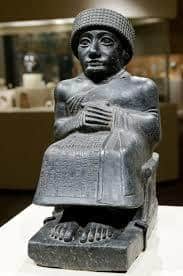Content
This lesson is intended to introduce students to research methods in psychology that they will be using throughout the semester. It will also give them a context to evaluate psychological studies that they will encounter throughout the course. At the end of this lesson, students should be able to identify each of the three major research methods and their components, evaluate for efficacy in certain situations, and demonstrate understanding of the week’s vocabulary (which includes aspects of the research methods).
Process
This lesson will begin with a PowerPoint lecture on the research methods—descriptive research, correlational research and experimental research—and the important aspects of each that will be assessed later in the semester (including vocabulary, such as independent variables, control variables, and hindsight bias). Because the majority of the students will have already been exposed to the vocabulary words and may have a working understanding of some of the concepts to be covered, the lecture is intended to be brief and interactional—the teacher will engage with students to share what they already know rather than be handed the information all over again. See attached PowerPoint presentation.)
Following the lecture, students will be broken into their pods (small groups of 3). Each pod will be assigned a particular descriptive method that was just discussed in the lecture, and given a worksheet (attached). Students will have about 15 minutes to design a study within their group that describes High School cafeteria behavior. Their study should be a representation of the kind of research method they have been assigned. Once they have completed the questions regarding the design of their study, they should have their design signed off by the teacher. Once it is approved, students will share their study with another group in the class who was given a different kind of study. Students will be encouraged to ask questions and evaluate the other group’s study for problems, e.g. are there any confounding variable they did not think about; is their study clear enough; is there any bias? Students will then turn in their worksheet as an example of their proficiency in descriptive methods of research.
Product
Students will complete a worksheet. The first portion asks them to determine variables in a psychology experiment. The second section relates to the study each group designs during class.
Evaluation
Student learning will be assessed informally by the teacher when they receive approval for the study they design. They will be assessed as proficient if they can use the correct vocabulary in their description and their newly designed study meets the standards of a good psychological study (they have accounted for confounding variables, they have limited all sources of bias, etc.).
Students will start by showing understanding of the concepts they took notes on earlier in the lesson. They will also engaging in some application when they design their study for a particular topic. They will be encouraged to discuss their study with other groups and evaluate that study for problems or bias.
Students will have the greatest amount of choice in the designing of their study. There are numerous ways to describe behavior in a high school cafeteria, and numerous ways to run a study with the particular method they were randomly assigned.
The activity at the end of this lesson was the second or third iteration of the activity. As I discussed my ideas with my fellow Ed Methods classmates, we were able to refine it and narrow it in scope. I was able to do that more so after discussing my ideas with my cooperating teacher. The activity went well; students were engaged and interested. They appreciated having the responsibility to be creative in designing their own study.
The lecture was a bit difficult for the class. Based on the worksheet and conversations with individual students, they had a good grasp of the content. However, since it was an extended period of time where they were only supposed to take notes, it was a bit difficult for them to focus at times. This was a good lesson for me in breaking the lecture into pieces and using more examples.
Description: Illustration of the setup of a Milgram experiment. The experimenter (E) convinces the subject (“Teacher” T) to give what he believes are painful electric shocks to another subject, who is actually an actor (“Learner” L). Many subjects continued to give shocks despite pleas of mercy from the actors.
Date: 6 September, 2014




 Content— 3rd grade students will go over strategies for reading, breaking down, and solving story problems. These story problems deal with basic addition and subtraction operation that the students will be required to know before attempting the story problems. This lesson is based on Building Bridges Session 19 with activity worksheets 1.3 and 1.4 which have two subtraction and addition story problems with embedded work space.
Content— 3rd grade students will go over strategies for reading, breaking down, and solving story problems. These story problems deal with basic addition and subtraction operation that the students will be required to know before attempting the story problems. This lesson is based on Building Bridges Session 19 with activity worksheets 1.3 and 1.4 which have two subtraction and addition story problems with embedded work space.